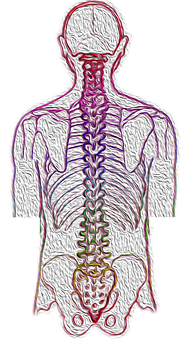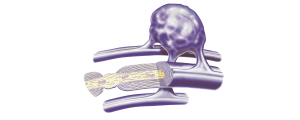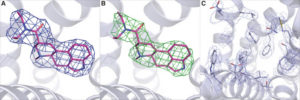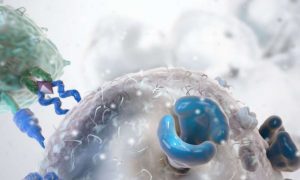Highlights
- •Senescent cells are induced at the lesion periphery upon spinal cord injury
- •Administration of senolytic drugs promotes locomotor and sensory recovery
- •ABT-263 treatment suppresses pro-inflammatory and pro-fibrotic SASP responses
- •Targeting senescent cells favors a pro-repair microenvironment after injury
Summary
Persistent senescent cells (SCs) are known to underlie aging-related chronic disorders, but it is now recognized that SCs may be at the center of tissue remodeling events, namely during development or organ repair. In this study, we show that two distinct senescence profiles are induced in the context of a spinal cord injury between the regenerative zebrafish and the scarring mouse. Whereas induced SCs in zebrafish are progressively cleared out, they accumulate over time in mice. Depletion of SCs in spinal-cord-injured mice, with different senolytic drugs, improves locomotor, sensory, and bladder functions. This functional recovery is associated with improved myelin sparing, reduced fibrotic scar, and attenuated inflammation, which correlate with a decreased secretion of pro-fibrotic and pro-inflammatory factors. Targeting SCs is a promising therapeutic strategy not only for spinal cord injuries but potentially for other organs that lack regenerative competence.
Introduction
A spinal cord injury is a major cause of disability in humans and other mammals, often leading to permanent loss of locomotor and sensory functions. This type of traumatic lesion is defined by three biological features: a lesion core or fibrotic scar with no viable neural tissue; an astrocytic scar around the lesion core; and a surrounding area of spared neural tissue with limited function, which may exhibit some functional plasticity (O’Shea et al., 2017). Although the lesion scar provides structural support, it also creates an inhibitory microenvironment for the regrowth of severed axons, thus preventing re-enervation of the original targets (Cregg et al., 2014). A spinal cord injury is further defined as an inflammatory condition mediated by activated astrocytes and infiltrating macrophages that remain in the spinal cord indefinitely (Donnelly and Popovich, 2008). Immediately after the injury, the blood-spinal cord barrier is disrupted and, although it gradually recovers, it remains compromised for a long period of time (Whetstone et al., 2003). This facilitates the extravasation of immune cells contributing to the establishment of a chronic inflammatory state (Beck et al., 2010).In contrast to mammals, the zebrafish spinal cord has the remarkable capacity to recover motor and sensory functions after injury. This regenerative ability seems to stem from the supportive microenvironment where there is no formation of a glial or fibrotic scar and inflammation is dynamically controlled by macrophages (Tsarouchas et al., 2018), allowing neurogenesis and regrowth of severed axons (Becker et al., 1997; Vajn et al., 2013).While considerable knowledge was achieved on the biological processes that occur after a spinal cord injury in mammals and regenerative species, small progress was obtained on therapeutic options, suggesting that other cellular players might be relevant following an injury. Senescence is a cellular concept traditionally seen as a permanent cell-cycle arrest response related to aging (van Deursen, 2014; Gorgoulis et al., 2019; Herranz and Gil, 2018). Studies in recent years changed the way we perceive cellular senescence, placing it at the center of tissue remodeling in disease settings by limiting fibrosis, namely in wound healing (Demaria et al., 2014; Jun and Lau, 2010), damaged livers (Kong et al., 2012; Krizhanovsky et al., 2008), and infarcted hearts (Meyer et al., 2016). In models with high regenerative abilities, such as salamander limbs, zebrafish hearts and fins, and neonatal mouse hearts, a burst of transient senescent cells (SCs) was shown to be induced after an injury (Sarig et al., 2019; Da Silva-Álvarez et al., 2019; Yun et al., 2015). These cells were shown to be efficiently cleared from the tissues as regeneration progressed, possibly by macrophages (Yun et al., 2015). Remarkably, if this initial senescence is depleted, zebrafish fin regeneration is impaired (Da Silva-Álvarez et al., 2019), suggesting that a transient accumulation of SCs appears to have beneficial functions. Alternatively, persistent senescence is detrimental for tissue and organ function in aging and aged-related diseases, such as atherosclerosis, osteoporosis, diabetes, and neurodegeneration (Calcinotto et al., 2019). Key to their various roles is the fact that SCs secrete a plethora of factors known as senescence-associated secretory phenotype (SASP) (Krtolica et al., 2001). It is through their SASP that SCs communicate with neighboring cells and modulate the tissue microenvironment, thus exerting most of their physiological effects (Acosta et al., 2013; Calcinotto et al., 2019). Importantly, the SASP mediates paracrine senescence, a process where SCs induce neighboring cells to undergo senescence (Acosta et al., 2013). It is becoming accepted that the beneficial versus detrimental effects of the SASP depend not only on its composition and stage of senescence progression, but also on the cell type affected and the stressor/injury type (Herranz and Gil, 2018).Considering that persistent senescence was shown to be harmful, we hypothesized that accumulation of SCs contributes to the failure of spinal cord regeneration observed in mammals. In agreement with this hypothesis, we have shown that SCs are induced after spinal cord injury in both zebrafish and mice. While induced SCs in the zebrafish spinal cord progressively decrease, in mice these cells increase over time. We demonstrate that pharmacological depletion of SCs during the subacute post-injury phase in mice seems to attenuate the secondary damage and maximize the extent of spared tissue by decreasing inflammation burden, scar extension, and demyelination, leading to a better functional outcome. Therefore, our data support the potential use of therapeutics targeting SCs to promote neuroprotection in the context of spinal cord injuries.







